Brazil will host the Copa America for the first time in 30 years, with a tournament that is full of drama. Chile will look to defend back-to-back crowns, the Selecao will seek redemption on home soil, and Lionel Messi returns to Argentina for another chance at silverware with the senior national team.
ESPN FC’s Tim Vickery spells out the biggest storylines of the tournament and assesses all 12 teams taking part in this summer’s Copa America, with all matches streaming live in the U.S. on ESPN+.
Jump to: Key storylines | Key players | Must-see days and matches | Team-by-team guide
Key storyline: This year’s Copa is wide-open
South American national teams have not been in competitive action since last year’s World Cup. Those teams that failed to make it to Russia have had nothing but friendlies since October 2017, but the silly season comes to an end with a bang in Brazil. It’s time to get serious.
This summer’s Copa begins a new competitive cycle in South America, which will run all the way to Qatar at the end of 2022. Many new coaches are facing their first real challenges — of the 10 South American nations, six will be playing for points for the first time under their current coaches — and plenty of new players have been introduced. Whatever happens, when the story is written of the South American teams at the next World Cup, events in Brazil 2019 will form part of the narrative.
The traditional powerhouses also have plenty of questions. The hosts’ being without Neymar has caused some anxiety, but frankly, they might perform better without him. Roberto Firmino and Gabriel Jesus, fresh off fine seasons for Liverpool and Manchester City, respectively, will get the chance to definitively lead the line.
Argentina have Messi back and fully engaged in the cause, but the squad around him — 15 of the 23-man squad have fewer than 15 international caps — is always a concern. He has often struggled when having to “do it all himself,” but this raw squad lacks the muscle memory of back-to-back defeats in the Copa final, both times to Chile. It might breed a sense of fearlessness that spurs them forward. Plenty of scrutiny will fall on interim boss Lionel Scaloni in what amounts to his first full-time management role, having previously been a national team assistant under Jorge Sampaoli and at Sevilla.
Then there’s the issue of timing. Usually, the road to the World Cup starts very soon after the Copa America, but because Qatar 2022 will be played at the end of the calendar year, the qualifiers have been pushed back, and as a result, some of the urgency has been removed from the Copa. Beyond Argentina and their caretaker at the helm, Bolivia, Colombia and Paraguay played their first games under new coaches as recently as March. Having so many “undercooked” teams will open plenty of room for surprises.
Making things most intriguing is the choice of invited teams. Japan and Qatar take part in 2019, and it will be fascinating to observe their progress. Japan are a vastly better team than the one that performed poorly on their previous Copa appearance 20 years ago, and Qatar have proven that they have some quality, having beaten Japan earlier this year in the final of the Asian Cup. Playing in that competition could make the guests more battle-hardened than some of their opponents, making it a tough competition to predict.
– Vickery: With Neymar out, time for Brazil to step up
– When is the Copa America?
– Full Copa America fixtures schedule
Layered across all the present-day intrigue is the history and emotion of the Copa America itself. It is football’s oldest continental competition, a reflection of the extraordinary speed with which the game took hold in the south cone of South America in the first few decades of the 20th century. The tournament was contested for the first time in 1916, and in the early years, it was held as often as possible, often on an annual basis. This gave rise to an extraordinary improvement in standards and the development of a new style of play.
Both innovations became clear to a European audience when Uruguay caused a major upset by cruising to the gold medal in the 1924 Olympics, with a balletic game that astonished the crowds. Four years later in Amsterdam, they did it again, with Argentina winning silver. By then it was clear: There had to be a football competition open to all comers, amateurs and professionals alike, to find out who really was the best. And so the World Cup was born, staged in Uruguay in 1930, just 14 years after the little country organised the first Copa America. Uruguay won that competition too.
Jesus, James and Messi: Players to watch
Gabriel Jesus: Destined to be the solution to Brazil’s puzzling centre-forward problem, Jesus drifted out of form at the wrong time. After he scored so freely in qualification, it all went wrong in Russia 2018. The young Man City forward suffers the stigma of being a Brazil No. 9 who failed to score a single goal in a World Cup, and coach Tite later regretted not dropping him.
Jesus was left out of Brazil’s first post-World Cup squad and spent the rest of the season as a backup option to Roberto Firmino, but he seems to have turned it around at the right time. With five goals in the past three games, Jesus should begin the Copa as the starter up front, where the pressure will be on him to carry his form into the tournament.
James Rodriguez: The breakout star of the 2014 World Cup, James will surely enjoy returning to the scene of his greatest triumph. He has endured a frustrating five years. Unable to be the main star in Cristiano Ronaldo’s Real Madrid, he was loaned out to Bayern Munich, where he failed to shine, and now he faces an uncertain future. With the national team, though, there is no doubting his importance to the cause, something made obvious by the tameness of Colombia’s performances when he was injured during Russia 2018.
James clearly relishes his status with the national team, and on the evidence of the FIFA dates in March, this has not been altered now that Carlos Queiroz has taken over. He will probably be given a free role in the Copa, able to wander across the attacking line, causing problems to the opposing defence and reminding everyone of the brilliance of his 2014 displays.
Lionel Messi: Football fans are starting to realise that every Messi performance takes us closer to the end. It’s an added bonus, then, that some of those games will take place with Argentina.
Following the disaster of the 2018 World Cup, when Argentina lost in easy fashion to eventual winners France, it was not clear that Messi would play for his country again. He sat out international duty until March, but now it is clear that he’s willing to enter one final cycle in a bid to win a senior title with the national team.
There is a Copa on home soil next year, but the book will surely close with the 2022 World Cup. With this in mind and with Argentina currently coached by a caretaker, it would have been understandable if Messi had decided to take the summer off. Instead, he’s willing to put himself on the line once more, which adds an extra layer of interest to the competition.
Must-see days and matches
June 15, Argentina vs. Colombia, Group B: An excellent clash to light up the first Saturday of the Copa (live on ESPN+, 6 p.m. ET). Ever since Colombia’s astonishing 5-0 win in Buenos Aires back in 1993, this has been one of South America’s most entertaining matchups. Added spice comes from the fact that the pair will be co-hosting next year’s Copa and are engaged in a tug-of-war to decide which country will have the biggest knockout games, including the final.
Argentina, of course, have won two World Cups, but of the South American nations that have never won the World Cup, Colombia are probably the most likely to do so. This, then, in Salvador’s excellent Fonte Nova stadium, is a meeting of heavyweights.
June 17, Chile vs. Japan, Group C: Chile go into this game as reigning champions after finally getting their hands on the trophy in 2015 and winning again in New Jersey a year later. It is harsh on a team that is rebuilding, but the pressure is on them. The class of 2019 have a lot to live up to.
Equally, it will be intriguing to see how Japan perform (live on ESPN+, 7 p.m. ET). Back in 1999, in their previous Copa adventure, they were novices. They have since played the past six World Cups and should arrive in Brazil with no trace of an inferiority complex. Oh, and they’ll have no lack of support, either; they begin their campaign in the city with the world’s largest number of Japanese immigrants.
1:28
Steve Nicol outlines how defenders should stop Neymar and he explains if he were defending Neymar, he’d do anything to upset his game.
June 18, Brazil vs. Venezuela, Group A: Merely making up the numbers as recently as 20 years ago, Venezuela are now a serious force and underlined their progress with a convincing win over Argentina in Madrid. They have beaten Brazil in a friendly and held them to draws in competition, but at the senior level, they have never won a match against Brazil with points at stake. Convinced that the current side will take them to their first World Cup, they are now aiming high (live on ESPN+, 8:30 p.m. ET).
Brazil, meanwhile, will be under pressure. Can the Venezuelans take advantage? In one corner, the five-time world champions; in the other, the team with no tradition. It will be fascinating to see whether the outsiders have a shot.
Team-by-team Guide
Every game of the 2019 Copa America will be on ESPN+ in the U.S. this summer (all kickoff times ET).
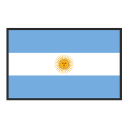
ARGENTINA, Group B
Group games: vs. Colombia (7 p.m. ET June 15), vs. Paraguay (9:30 p.m. ET June 19), vs. Qatar (4 p.m. ET June 23)
FIFA rank: 11
SPI chances of winning: 13.96 percent
Why they’ll go far: The good news, signalled by his return to the national team in March, is that Messi is back in a bid to win a senior title with his country. The Barcelona genius, plus the likes of Sergio Aguero and Angel Di Maria, still has plenty to offer, and over the past few months, there has been some pleasing development from midfielders Giovani Lo Celso and Leandro Paredes.
Argentina, then, can call on some dazzling individual talent — enough to give them a puncher’s chance. The 2018 tournament was such a shambles that expectations have fallen, which might prove to benefit Scaloni’s side.
Why they won’t: Going into a major tournament under the command of a caretaker coach is frankly bizarre. It has to do with the facts that Scaloni is cheap — the local FA had to dig deep to pay off Sampaoli — and that World Cup qualification doesn’t get underway until next March. In fact, it would almost be a problem if Argentina were to win the Copa: How could they get rid of Scaloni after landing the first senior title since 1993?
Uncertainty over the future, then, is clearly a problem. Although a more pragmatic side have been defending better since the World Cup, the headaches remain. There will surely not be a repeat of the ill-advised three-centre-back formation that collapsed against Venezuela in March. For all the wealth of attacking riches, there is a dearth of top talent at the other end of the field. In his first eight games in charge, Scaloni had a look at seven goalkeepers, which is surely excessive, and Argentina’s wait for a centre-back of undisputed quality shows no sign of coming to an end.
Player to watch: Lionel Messi
Best XI (4-3-2-1): Esteban Andrada; Renzo Saravia, Nicolas Otamendi, German Pezzella, Nicolas Tagliafico; Giovani Lo Celso, Leandro Paredes, Roberto Pereyra; Lionel Messi, Angel Di Maria; Sergio Aguero

BOLIVIA, Group A
Group games: vs. Brazil (9:30 p.m. ET June 14), vs. Venezuela (9:30 p.m. ET June 18), vs. Peru (4 p.m. ET June 22)
FIFA rank: 63
SPI chances of winning: 0.6 percent
Why they’ll go far: The last time Bolivia made any impact on the Copa was in 1997, when they reached the final — on home ground. Away from the extreme altitude of La Paz, it is hard to find too many strong points. Perhaps the main one is precisely the lack of expectations.
Bolivia are traditionally seen as sacrificial, but on a number of recent occasions, they’ve surprised complacent opponents. There is some evidence that coach Eduardo Villegas can field a dependable defensive unit, and the longer their matches stay goalless, the more chance that their opponents might overreach and leave themselves open to the counterattack.
Why they won’t: Bolivian football has yet to replace the fine generation of talented players who got them to the 1994 World Cup, and to the absence of genuine quality, they can add an absence of preparation time. The chaotic Bolivian FA keep chewing up and spitting out coach after coach, and the latest man in charge, Eduardo Villegas, was appointed in February. Bolivia could find themselves outgunned both technically and physically.
Player to watch: Marcelo Martins
Best XI (4-2-3-1): Carlos Lampe; Marvin Bejerano, Luis Haquin, Adrian Jusino, Diego Bejerano; Raul Castro, Leonel Justiniano; Alejandro Chumacero, Samuel Galindo, Leonardo Vaca; Marcelo Martins
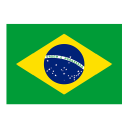
BRAZIL, Group A
Group games: vs. Brazil (9:30 p.m. ET June 14), vs. Venezuela (9:30 p.m. ET June 18), vs. Peru (4 p.m. ET June 22)
FIFA rank: 3
SPI chances of winning: 65.78 percent
Why they’ll go far: As tournament hosts, there is no chance of Brazil using the 2019 Copa to experiment. They have to win the trophy, as they did on all four previous occasions they staged the event. Coach Tite, then, is not holding back. He is going with the best of what is available to him.
There will be plenty of experience; midfielder Fernandinho and right-back Dani Alves have been recalled, as much for their dressing room wisdom as for their many virtues on the pitch. Willian has been called in to replace the injured Neymar, and there is no room for the likes of Lucas Moura or Vinicius Junior. The emergence since the World Cup of Richarlison and Lucas Paqueta gives the side extra options in the final third.
Why they won’t: The survivors of the 2014 World Cup campaign need no reminding that home advantage can turn into a handicap. Playing in front of their own expectant and volatile fans brings plenty of pressure.
This team is still finding their way. Tite confessed that selecting this squad was harder than naming his World Cup 23. A year ago, Brazil cruised through qualifying to Russia, but now, there are a few uncertainties. Post-World Cup performances have been disappointing, with Tite aware that he has yet to find the right blend. This is especially true in the centre-forward position. Since the World Cup, Firmino has been first-choice, but Brazil have so far been unable to knit his attributes into a team pattern, and much needed training time has been hit by Liverpool’s winning run to the final of the Champions League.
Player to watch: Gabriel Jesus
Best XI (4-1-4-1): Alisson; Dani Alves, Marquinhos, Thiago Silva, Filipe Luis; Casemiro; Richarlison, Arthur, Fernandinho, Coutinho; Gabriel Jesus

CHILE, Group C
Group games: vs. Colombia (7 p.m. ET June 15), vs. Paraguay (9:30 p.m. ET June 19), vs. Qatar (4 p.m. ET June 23)
FIFA rank: 15
SPI chances of winning: 2.97 percent
Why they’ll go far: After 99 years of waiting, Chile finally won the Copa on home ground in 2015. A year later another triumph, this time without home advantage, probably rates as the greatest moment in the history of the national team. All of this means that the class of 2019 will be highly motivated; they go into the tournament as defending champions and will fight hard to retain their crown.
Colombian coach Reinaldo Rueda has pedigree — in the Copa Libertadores, in the World Cup and in youth development — making him a qualified name to oversee this next stage in the team’s development. In little more than a year in charge, his results have been mixed, but he has been working hard to find a blend and might have hit on something in March, when he tried a back-three formation in a friendly against the U.S.
Why they won’t: Almost all of Chile’s golden generation came through the 2007 Under-20 side. They have all aged together and ran out of collective steam in the tail end of the Russia 2018 qualifiers. The big question — a problem for all of the lesser South American nations through the years — is how to replace them. There is a lack of top-quality talent coming through, and Chilean clubs are performing poorly in continental competitions.
Player to watch: Alexis Sanchez
Best XI (3-5-2): Gabriel Arias; Gary Medel, Gonzalo Jara, Guillermo Maripan; Mauricio Isla, Arturo Vidal, Esteban Pavez, Charles Aranguiz, Oscar Opazo; Alexis Sanchez, Nicolas Castillo
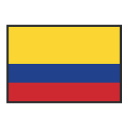
Group games: vs. Colombia (7 p.m. ET June 15), vs. Paraguay (9:30 p.m. ET June 19), vs. Qatar (4 p.m. ET June 23)
FIFA rank: 12
SPI chances of winning: 6.56 percent
Why they’ll go far: With a sizable population and a football-crazy fanbase, Colombia are a long-term bet to one day add their name to the list of World Cup winners. Having qualified for and occasionally lit up the past two tournaments, they can claim to be moving in the right direction, and with Portugal’s Carlos Queiroz, they have a coach with global pedigree and massive experience. He has already proven his capacity to adapt his methods to the players at his disposal.
It will be fascinating indeed to see what he makes of the current Colombian squad, filled as it is with players of technical and physical prowess. It is also a squad that, after two World Cups, has lost any inferiority complex. They should enjoy the support of Colombia’s traveling army, such a feature of international tournaments since the 2011 Copa in Argentina.
Why they won’t: For all his experience, Queiroz has never worked in South America before. There is an obvious danger, then, that he will still be finding his feet in the Copa and that the tournament will come a little too early for his team to be anywhere near their best.
There is also a worrying dependence on a number of key individuals. The disappointing nature of last year’s World Cup elimination highlighted the importance of James Rodriguez, and there is a lack of top-class cover for keeper David Ospina, himself not always the most reliable last line of defence. Playmaker Juan Fernando Quintero, so impishly brilliant in Russia, will miss out through injury.
Player to watch: James Rodriguez
Best XI (4-4-2): David Ospina; Santiago Arias, Yerry Mina, Davinson Sanchez, Cristian Borja; Wilmar Barrios, Mateus Uribe, Juan Cuadrado, James Rodriguez; Duvan Zapata, Radamel Falcao
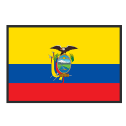
ECUADOR, Group C
Group games: vs. Colombia (7 p.m. ET June 15), vs. Paraguay (9:30 p.m. ET June 19), vs. Qatar (4 p.m. ET June 23)
FIFA rank: 59
SPI chances of winning: 1.1 percent
Why they’ll go far: Hernan Dario Gomez was not a universally popular choice to take over as national team coach, but the man has undoubted pedigree. From Colombia in 1990 to Panama last year, he is dripping with World Cup experience, which includes taking Ecuador to their tournament debut some 17 years ago. He returns to an Ecuador side that has developed some of the characteristics that he encouraged: They are an athletic, physically imposing side that will seek to close the game down through the middle and launch quick and powerful breaks down the flanks.
When it works — as it did in November’s 2-0 win away to Peru — Ecuador can be an impressive sight. Gomez seems to have made some progress in tightening up a defensive unit that fell to pieces in the closing stages of the Russia 2018 qualifiers.
Why they won’t: In his previous spell in charge, Gomez confessed that he did not take the Copas of 2001 and 2004 particularly seriously — he has continually played down the importance of this year’s tournament. No one, he says in his defence, stops him in the street to ask about the Copa America. Qatar 2022 is the big subject. And so he makes no secret of his priority — World Cup qualification — or the fact that he believes his team will not be fully prepared until next year.
Moreover, there is a lack of outstanding quality, with some of the players from the 2014 World Cup now aging and in decline. There is a worrying dependence on Enner Valencia for goals. Gomez will have half an eye on the Under-20 World Cup, in which Ecuador are thriving as reigning South American champions, in the hope that such potential can soon break through.
Player to watch: Enner Valencia
Best XI (4-5-1): Alexander Dominguez; Pedro Pablo Velasco, Gabriel Achilier, Robert Arboleda, Beder Caicedo; Carlos Gruezo, Antonio Valencia, Jefferson Orejuela, Jhegson Mendez, Ayrton Preciado; Enner Valencia
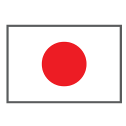
JAPAN, Group C
Group games: vs. Colombia (7 p.m. ET June 15), vs. Paraguay (9:30 p.m. ET June 19), vs. Qatar (4 p.m. ET June 23)
FIFA rank: 26
SPI chances of winning: 0.82 percent
Why they’ll go far: They’re fundamentally tough to break down. The backline might be young but looks solid without the ball and confident with it. This tournament also comes at a perfect time. Just as Qatar want to toughen up ahead of 2022, Japan are looking toward the Tokyo Olympics next summer. It’s no surprise, then, that 18 out of the 23 are 22 years of age or under. Nobody at home expects or demands success in the Copa; it’s an important staging post in a long-term preparation plan, which should give the players the freedom to express themselves.
There is some experience in the shape of goalkeeper Eiji Kawashima in goal, Gaku Shibasaki in the middle and Shinji Okazaki in attack, but the focus will not be on these French, Spanish and English-based stars, as there is talent elsewhere. Takefusa Kubo has just turned 18 and is eligible to return to Barcelona, but Real Madrid and PSG are interested in the midfielder’s silky skills. He has the confidence to shine in South America, and then there is Shoya Nakajima. All in Japan know that the 24-year-old can make the team tick going forward — he was signed by a Qatari club for €35 million in February — but now is the time to show on a wider stage.
Why they won’t: There is a worry about where the goals will come from. Okazaki has a fine international goalscoring record, but if he struggles in South America, it’s asking a lot for the likes of Daizen Maeda and Ayase Ueda (the latter still a university student) to make the step up.
Take out the sprinkling of veterans, and there’s zero senior international tournament experience in the squad, which means they’re heading into the unknown. Finally, Japan have a poor record against South American opposition in competitive games, losing all four World Cup meetings before last June, when an early sending off and penalty against Colombia led to that long-awaited win.
Player to watch: Gaku Shibasaki
Best XI (4-2-3-1): Eji Kawashima; Tomoki Iwata, Takehiro Tomiyasu, Yuta Nakayama, Daiki Sugioka; Ko Itakura, Gaku Shibasaki; Takefusa Kubo, Shoya Nakashima, Tatsuya Ito; Shinji Okazaki
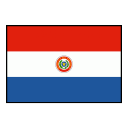
PARAGUAY, Group B
Group games: vs. Colombia (7 p.m. ET June 15), vs. Paraguay (9:30 p.m. ET June 19), vs. Qatar (4 p.m. ET June 23)
FIFA rank: 36
SPI chances of winning: 0.86 percent
Why they’ll go far: In this year’s Copa Libertadores, all three Paraguayan clubs topped their groups, often finishing ahead of rivals with far greater financial resources. There is a clear lesson here: Never underestimate the Paraguayans. Their teams have an innate ability to dig deep, to add up to more than the sum of their parts.
Replacing the generation that reached the 2010 World Cup quarterfinal has not proven easy, but on paper, at least, the current group has the potential to form the strongest team since then. They will come to Brazil in the hope of setting out on the right foot on the road to Qatar 2022.
Why they won’t: After Colombia’s Juan Carlos Osorio lasted just one game in charge, former Argentina centre-back Eduardo Berizzo has come in to coach the side. He comes well qualified, but there are two problems. The first is he has only just taken over. The other potential problem is Berizzo’s idea of play. He wants his team to defend high up the field and take the initiative in the game. This is alien to the traditional Paraguayan style of heroic deep defence. The difficulties of implanting a new style and mentality were apparent in March, when both times the team was poor and half-hearted in the first half. It’s also still not apparent where his side’s goal threat will come from.
Player to watch: Miguel Almiron
Best XI (4-2-3-1): Junior Fernandez; Bruno Valdez, Fabian Balbuena, Gustavo Gomez, Santiago Arzamendia; Richard Ortiz, Matias Rojas; Derlis Gonzalez, Juan Rodrigo Rojas, Miguel Almiron; Federico Santander

PERU, Group A
Group games: vs. Brazil (9:30 p.m. ET June 14), vs. Venezuela (9:30 p.m. ET June 18), vs. Peru (4 p.m. ET June 22)
FIFA rank: 21
SPI odds of winning: 1.14 percent
Why they’ll go far: Peru are essentially taking to Brazil the same squad that went to Russia last year, ending a 36-year World Cup drought. This should certainly be a positive. With few exceptions, the squad is a young one, full of players who have yet to hit their peaks. It was fascinating to watch them grow together, picking up confidence under the calming influence of Argentine coach Ricardo Gareca. They made massive strides toward the end of the 2018 qualifiers, and despite group-phase elimination in Russia, they gave eventual champions France a tough game and could fly home with heads held high — plus the knowledge of being able to write more chapters together.
Now, then, they enter the era of consolidation, the time when they show that they will be a force to be reckoned with in the next few years. Centre-forward Paolo Guerrero is back and reinvigorated after his harsh drugs ban, and Peru should be in a much better state of preparation than some of their opponents and so are entitled to aim high in Brazil.
Why they won’t: Coach Gareca might well be disappointed by the lack of renewal in his squad. It’s good that he can keep his players together, but a little more competition for places would be no bad thing. Domestic Peruvian football, though, is not throwing up a glut of quality. There is always the danger of complacency setting in.
Results since the World Cup also raise a question. It is always unwise to read too much into friendlies, but their lack of consistency, though, is striking. Are his men mentally strong enough to achieve good results on a regular basis? Has their 4-2-3-1 formation become too predictable?
Player to watch: Yoshimar Yotun
Best XI (4-2-3-1): Pedro Gallese; Luis Advincula, Miguel Araujo, Anderson Santamaria, Miguel Trauco; Renato Tapia, Yoshimar Yotun; Andre Carrillo, Christian Cueva, Edison Flores; Paolo Guerrero
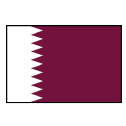
QATAR, Group B
Group games: vs. Colombia (7 p.m. ET June 15), vs. Paraguay (9:30 p.m. ET June 19), vs. Qatar (4 p.m. ET June 23)
FIFA rank: 55
SPI chances of winning: 0.12 percent
Why they’ll go far: Qatar are on a roll, are full of confidence and have nothing to lose. Wins over Switzerland and Ecuador (and a draw with Iceland) in 2018 suggested that there was something happening, but then the Maroons took the Asian Cup by storm in January, lifting the trophy by scoring 19 goals and conceding once. Such form means that the opener against Paraguay is winnable and then anything can happen. This is a national team that feels like a club, and this could be Qatar’s biggest strength, coupled with the possibility that they will be underestimated.
They also play an appealing style. Their counterattack was too good for the likes of South Korea and Japan earlier this year, and they displayed a ruthlessness in front of goal that has been all too rare in Asian football over the years. Almoez Ali scored a tournament record of nine goals, a tally that was supported in some style by the relentless assists from Akram Afif. These youngsters, two of 10 in the squad who are 22 or under, will relish this chance to show how good they really are.
Why they won’t: It is one thing to win the Asian tournament in Abu Dhabi, a 45-minute flight from Doha, but competing in Brazil is completely different. Qatar could not have moved further out of their comfort zone if they had tried, even if that is the point of participating for a team that craves tournament football. Qatar have not traditionally travelled that well and have little experience playing teams from South America and even less actually playing there.
The entire squad is based in the Qatar league, one of the better tournaments in the Middle East but one that lacks intensity and pressure. South America could be a real shock to the system. Equally, it remains to be seen how that system functions against the likes of Messi. In the UAE, Korea and Japan were frustrated by a team they expected to beat and lacked a plan B when the first was not working. The likes of Argentina and Colombia are likely to be a little more savvy. Qatari hands will be full with the conditions, the physical challenge and the skills of the opposition.
Player to watch: Almoez Ali
Best XI (5-3-2): Saad Al Sheeb; Ro-Ro, Bassam Al-Rawi, Tarek Salman, Assim Madibo, Abdelkarim Hassan; Hassan Al-Haydos, Boualem Khouki, Abdulaziz Hatem; Almoez Ali, Akram Afif

URUGUAY, Group C
Group games: vs. Colombia (7 p.m. ET June 15), vs. Paraguay (9:30 p.m. ET June 19), vs. Qatar (4 p.m. ET June 23)
FIFA rank: 6
SPI chances of winning: 5.92 percent
Why they’ll go far: Statistically the best South American side in last year’s World Cup, Uruguay progress with a serenity and a promise that have enthused coach Oscar Washington Tabarez, even at the age of 72, to extend a spell in charge that stretches back to the start of 2006. At the heart of the Tabarez project has been the use of the youth sides, and especially the Under-20s, to prepare the next generation.
In the run-up to Russia, Uruguay freshened up their lineup with a new crop of talented midfielders who changed the characteristics of the team. Instead of relying on a combination of resilience and quick breaks, the newcomers added the possibility of controlling possession and dictating the tempo of the game. A year on, the likes of Rodrigo Bentancur, Lucas Torreira and Federico Valverde are older, wiser and presumably better, and this offers real hope that Uruguay will be contending for titles.
Why they won’t: Tabarez has been able to count on a handful of stalwarts, and some genuinely world-class players have put in more than a decade of service. But on the evidence of the past club season, time could be catching up with them. Luis Suarez appears to have lost some of his pace, his strike partner Edinson Cavani has run into injuries, and captain and centre-back Diego Godin is looking vulnerable.
Youngsters are also coming through, but the process of transition — substituting some of the best players in the history of the Uruguayan national team — will be a delicate affair.
Player to watch: Luis Suarez
Best XI (4-4-2): Fernando Muslera; Martin Caceres, Jose Maria Gimenez, Diego Godin, Diego Laxalt; Rodrigo Bentancur, Lucas Torreira, Matias Vecino, Nicolas Lodeiro; Edinson Cavani, Luis Suarez
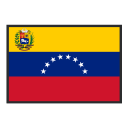
VENEZUELA, Group A
Group games: vs. Brazil (9:30 p.m. ET June 14), vs. Venezuela (9:30 p.m. ET June 18), vs. Peru (4 p.m. ET June 22)
FIFA rank: 29
SPI chances of winning: 0.71 percent
Why they’ll go far: The only South American side never to have played in a World Cup, Venezuela are confident that the road to making their debut in Qatar will start in Brazil this summer. They have certainly been moving in the right direction, as highlighted by the comprehensive 3-1 win over Argentina in March.
Coach Rafael Dudamel now has a fascinating blend; some of the youngsters who reached the final of the 2017 Under-20 World Cup have come through well, such as excellent goalkeeper Wuilker Farinez, and are forming a team with more established stars such as midfield stalwart Tomas Rincon and fearsome centre-forward Salomon Rondon. They attack with pace down the flanks, and Dudamel has tried to make a point of tightening up the defence — the weak part of the side in the last qualification campaign — with the addition of more pace at the back.
Why they won’t: Venezuela are moving into uncharted waters. How will they cope with the heightened expectations brought about by their progress? They had a brief flirtation with such a situation toward the start of the decade; a win over Argentina in the early stages of Brazil 2014 qualifiers set off hopes that Venezuela might be on the verge of the breakthrough, which would soon be dashed, as the team were unable to score enough goals to keep them in the hunt.
They should be much better prepared now, though Dudamel is concerned by his side’s over-dependence on the counterattack. Against opponents less open to the counter, can Venezuela dictate the tempo of the game with controlled possession in midfield?
Player to watch: Salomon Rondon
Best XI (4-3-3): Wuilker Farinez; Roberto Rosales, Yordan Osorio, Mikel Villanueva, Luis Mago; Tomas Rincon; Jhon Murillo, Yangel Herrera, Junior Moreno, Darwin Machis; Salomon Rondon
Credit: Source link
